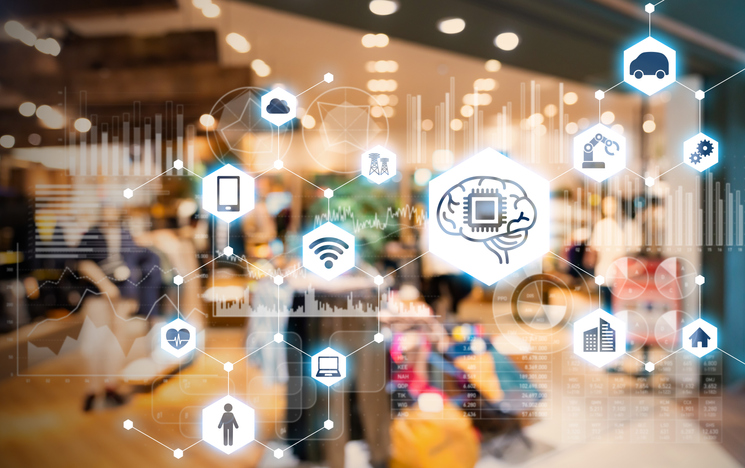Smart technology has already become an integral part of the modern world – in our smart devices, powering our Google searches, and helping us to do and achieve more than ever before.
However, some businesses are not taking advantage of the innovative technologies available to them, and as a result are missing out on key benefits like improved ROI, actionable data and optimised sales.
Marketers across the globe are starting to embrace the power of smart technologies like machine learning to enhance sales results and business growth. We’re seeing this with the rise of voice shopping, with 57 per cent of marketers believing they will be working with voice assisted devices like Alexa or Siri in the next two years.
Between identifying trends and patterns, optimising prices and enhancing product suggestions, machine learning is an integral element to maximise marketing effectiveness. Today, shoppers are inundated with offers and promotions competing for their attention across mobile web to in-app, in-store and online, which is why it’s crucial for retailers to leverage machine learning technology to stay ahead of the game.
Here are five benefits of machine learning for retailers.
- Predict shopper behaviour
Machine learning helps retailers to identify their target buyer, understand past and present interactions, and predict what shoppers will need and do next, allowing brands to effectively optimise customer offers. Chances are Aussies will not be shopping for woolly scarves and coats during the Christmas holidays, yet of course these will be flying off the shelves in New York.
Retailers can apply data about which products are one-time purchases, like a car or refrigerator, as opposed to regular items like toilet paper or milk. Machine learning provides insights that prevents customers from being bombarded with ads for BMWs when what they really need is to be reminded to buy shampoo.
- Drive brand engagement
By leveraging machine learning, retailers can easily deliver the right message at the right time and on the right channel. The more data available, the better retailers can engage shoppers in more meaningful ways.
There are seven creative ad elements that can be personalised – images, taglines, name, formatting, colour, copy and call to action. Combined with the myriad of devices that ads must be formatted for (desktop, mobile and tablet), thousands of ad exchanges and more than a billion shoppers with individual preferences, there are trillions of possible ad variations.
Of course, marketers aren’t equipped to mine terabytes of data at the speed and scale necessary to engage with shoppers whenever, wherever they are. Enter machine learning technologies, which can act on data with lightning-fast speed and precision.
- Optimise sales
The best deal for your product is constantly changing, and machine learning algorithms can assess key pricing variables such as seasonality, supply and demand. This allows retailers to offer the right price at the right time, without straying from specific targets such as maximum profit or revenue optimisation.
Machine learning technology also removes human error or bias. Through dynamic pricing models informed by big data sets, retailers can more accurately set prices that achieve all their goals — at scale and with accuracy.
- Enhance product recommendations
With the ability to identify and assess shopping trends and patterns, machine learning arms retailers with the capability to efficiently act on spending habits, shopper behaviour and market trends. This can help them personalise brand experiences and product recommendations that drive sales.
Machine learning algorithms generate suggestions for matching products (like an ottoman if you’re purchasing a lounge), instead of promoting an item that the customer currently has no use for.
- Make data actionable
Machine learning combines shopper data with market trends, even assessing factors like gender, age and location, to give retailers a holistic overview of each customer. These technologies can also identify opportunities that marketers may not have visibility over, such as new audience segments that could benefit from a specifically tailored approach.
Through predictive analytics, machine learning empowers retailers to more effectively target shoppers, both individuals and groups that share similar behaviours, based on informed predictions about a person’s next click, want, or need.
The ROI of machine learning
The predictive capabilities of machine learning is what makes it such a powerful tool for commerce marketers, allowing brands to use past and present customer data to project future behaviour and trends.
Machine learning models can predict the most relevant time to offer products, as well as helping retailers estimate how much inventory to stock during peak times compared to the rest of the year.
As a result, machine learning models help cut back on unnecessary spend (like wasted ad dollars and leftover products) while optimising marketing efforts to anticipate customer needs. Taken together, this leads to increased revenue and higher profit margins for brands.
Why machine learning is here to stay
Machine learning will continue to maximise revenue for retailers. Personalising content, cadence and pricing for each individual shopper, targeting an underserved segment in your database and connecting shoppers that convert faster and more often, are all benefits of leveraging this technology when it comes to retail.
Already an influential force in marketing, machine learning powers engagement across channels and campaigns, and we’ve only just begun to see the impact it is having on retail businesses. Businesses will need to embrace this industry disruption – a transformation that ultimately benefits both sides of the marketplace.
For more information, visit Criteo online here.

